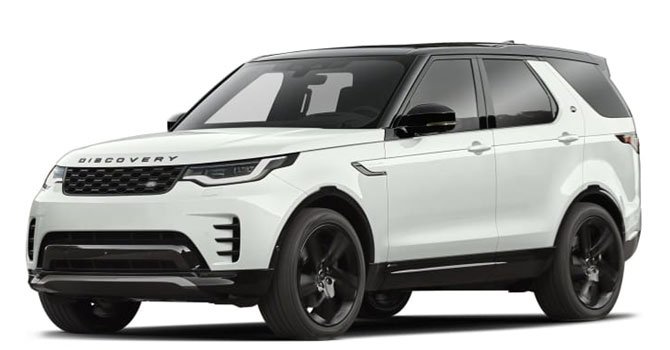
2022 Land Rover Discovery Stability Control

DYNAMIC STABILITY CONTROL (DSC) SAFETY
Make sure the following warnings have been read and fully understood before driving the vehicle. Failure to follow the guidelines could result in vehicle damage, serious injury, or death.
Dynamic Stability Control (DSC) does not compensate for driver error or misjudgment. The vehicle should be driven with due care and attention at all times. Always drive in a manner that is safe for the vehicle, its occupants, and other road users. Failure to do so can potentially result in a loss of control of the vehicle.
The vehicle may initially have reduced stability and braking performance in extremely low temperatures. In these conditions, drive with extra caution.
DYNAMIC STABILITY CONTROL (DSC) OVERVIEW
Make sure the relevant safety warnings have been read and understood before driving the vehicle. See DYNAMIC STABILITY CONTROL (DSC) SAFETY. Dynamic Stability Control (DSC) helps maintain the vehicle’s stability in critical driving situations, e.g., during unstable driving conditions such as understeer and oversteer. If required, DSC controls the engine’s power output and applies the brakes at individual wheels.
- Noise from the braking system may be heard during DSC operation.
- DSC may also activate if wheel spin is detected, to help improve the vehicle’s acceleration performance.
- DSC automatically enables when the vehicle’s ignition is switched on. DSC can be switched off via the touchscreen. See SWITCHING DYNAMIC STABILITY CONTROL (DSC) OFF.
- DSC works in conjunction with the terrain response system. When operational, the terrain response system automatically adjusts DSC to suit the current driving program selection. See TERRAIN RESPONSE OPERATION.
- The DSC lamp flashes in the instrument panel when DSC is active. See DYNAMIC STABILITY CONTROL (DSC) (AMBER).
- The DSC lamp illuminates permanently if the system develops a fault. Consult a retailer/authorized repairer if the fault persists.
SWITCHING DYNAMIC STABILITY CONTROL (DSC) OFF
Make sure the relevant safety warnings have been read and understood before driving the vehicle. See DYNAMIC STABILITY CONTROL (DSC) SAFETY.
The vehicle’s stability and safety may be reduced by inappropriately switching Dynamic Stability Control (DSC) off. Switching DSC off could result in a loss of control of the vehicle, potentially leading to serious injury or death.
To switch DSC off, the first touch of the vehicle controls icon on the touchscreen driver-side bar.
Select DRIVE.
To switch DSC off, touch the Dynamic Stability Control OFF soft key.
The touchscreen displays the DSC OFF icon to confirm DSC has been switched off. A tone also sounds.
Switching DSC off reduces the level of traction and stability control intervention. An increase in wheel spin and a reduction in the vehicle’s stability may be experienced.
In the majority of driving situations, particularly on-road, it is recommended that DSC is not switched off.
DSC cannot be switched off if the comfort, ECO, or AUTO terrain response driving programs are selected. See TERRAIN RESPONSE OPERATION.
DSC cannot be switched off if a driver assistance feature is active.
Make sure DSC is switched back on at the earliest opportunity. See SWITCHING DYNAMIC STABILITY CONTROL (DSC) ON.
SWITCHING DYNAMIC STABILITY CONTROL (DSC) ON
Make sure the relevant safety warnings have been read and understood before driving the vehicle. See DYNAMIC STABILITY CONTROL (DSC) SAFETY.
The touchscreen displays the DSC OFF icon if Dynamic Stability Control (DSC) has been switched off.
Touch the DSC OFF icon to switch DSC on. The DSC OFF icon extinguishes to confirm that DSC has been switched on.
DSC automatically enables when the vehicle’s ignition is switched on.
ACTIVE REAR LOCKING DIFFERENTIAL
Make sure the relevant safety warnings have been read and understood before driving the vehicle. See DYNAMIC STABILITY CONTROL (DSC) SAFETY.
The active rear locking differential improves traction on uneven surfaces.
Make sure the following guidance is followed, to avoid causing damage to the active rear locking differential.
During the vehicle’s first 1 000 miles (1 600 km):
- Avoid fully pressing the accelerator pedal.
- Do not exceed a vehicle speed of more than 120 mph (190 km/h).
NOTES
Always observe local speed limits.
- Avoid prolonged periods of driving at speeds in excess of 100 mph (160 km/h).
ALL-WHEEL DRIVE (AWD)
The All Wheel Drive (AWD) system enhances the vehicle’s traction and stability on uneven and slippery roads, and in adverse conditions. The AWD system automatically varies the status between AWD and Rear Wheel Drive (RWD) to suit the current driving style and prevailing conditions. The status can be viewed via the 4x4i feature. See 4X4i OVERVIEW. The instrument panel displays a message if a fault is detected with the AWD system. Reduced vehicle performance may also be experienced. In this event, the vehicle can still be driven, but with extra care. If the fault persists, contact a retailer/authorized repairer at the earliest opportunity.
